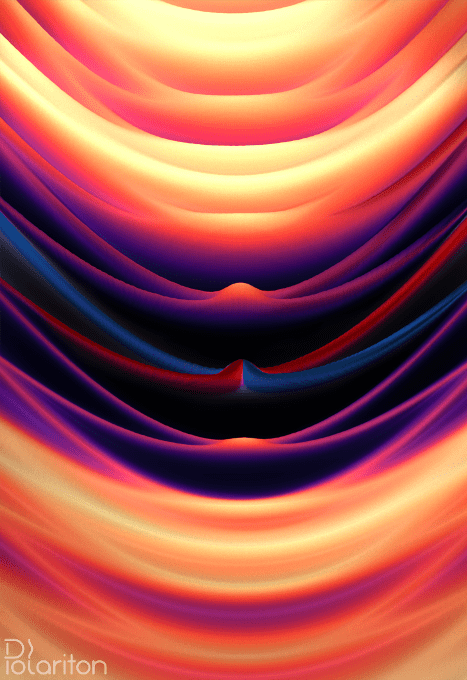Nov 14 2019
An international team of researchers from Poland, the United Kingdom, and Russia has developed a two-dimensional (2D) system that can be used to trap photons. The system is a thin optical cavity filled with liquid crystal.
 The dependence of the energy (vertical axis) on the angle for polarized light reflected from birefringent optical cavity (horizontal axis). Image Credit: M. Krol, UW Physics.
The dependence of the energy (vertical axis) on the angle for polarized light reflected from birefringent optical cavity (horizontal axis). Image Credit: M. Krol, UW Physics.
When an external voltage was applied to modify the properties of the cavity, the photons behaved similarly to massive quasiparticles featuring a magnetic moment, known as “spin”, under the impact of an artificial magnetic field. The study was reported in Science on Friday, November 8, 2019.
The world around humans includes three spatial dimensions and one temporal dimension. For a long time, physicists performing investigations into condensed matter have been dealing with lower dimensionality systems—one-dimensional (1D) quantum wires, 2D quantum wells, and zero-dimensional (0D) quantum dots.
Due to the reduced dimensions in which fast transistors in integrated circuits, efficient laser diodes and LEDs, and WiFi radio amplifiers operate, 2D systems have found the broadest range of technical applications.
When compared to free electrons, electrons trapped within two dimensions can behave very differently. For instance, electrons in graphene—a 2D carbon structure with honeycomb symmetry—behave like massless objects, that is, light particles known as photons.
In a crystal, electrons interact not just with each other but also with the crystal lattice, thus forming an intricate system that can be described by the concept of so-called quasiparticles. The properties of these quasiparticles—such as mass, electric charge, and magnetic moment—rely on the spatial dimension of the crystal and its symmetry.
Physicists can develop materials with lower dimensions, thus finding out “quasi-universes” filled with exotic quasiparticles. One such example is the massless electron in 2D graphene.
Discoveries such as these motivated scientists from the University of Warsaw, the Polish Military University of Technology, the Institute of Physics of the Polish Academy of Sciences, the University of Southampton, and the Skolkovo Institute near Moscow to analyze light trapped in 2D structures—optical cavities.
The authors of the Science paper developed an optical cavity, using which they trapped photons between two mirrors. The original concept was to use a liquid crystal material to fill the cavity, where the liquid crystal material acts as an optical medium. The molecules of this medium can rotate under the impact of an external voltage and modify the optical path length.
Therefore, the researchers were able to create standing waves of light within the cavity, where the energy, or vibrational frequency, of the waves was different when their electric field (polarization) was aligned across the molecules, and different for polarization along their axis (this phenomenon is known as optical anisotropy).
In the study, performed at the University of Warsaw, the exclusive behavior of photons trapped within the cavity was discovered as they behaved similar to mass-bearing quasiparticles. Although quasiparticles such as these have been detected earlier, they were challenging to manipulate since the light does not react with magnetic or electric fields.
As part of this research, it was observed that when the optical anisotropy of the liquid crystal material in the cavity was modified, the behavior of the trapped photons was similar to that of quasiparticles imparted with a magnetic moment, or a “spin” in “artificial magnetic field.”
When the electromagnetic wave was polarized, it took the role of “spin” for light in the cavity. The way light behaves in this system can be easily explained by using the analogy of the behavior of electrons in condensed matter.
The equations that describe the motion of photons confined within the cavity are similar to those describing the motion of electrons with spin. Hence, the researchers could develop a photonic system that absolutely imitates the properties of electrons and results in many fascinating physical effects like topological states of light.
The finding of new phenomena associated with the confinement of light within optically anisotropic cavities might facilitate new optoelectronic devices (for example, optical neural networks) to be implemented and neuromorphic calculations to be performed. Specifically promising is the possibility of creating an exclusive quantum state of matter—the Bose-Einstein condensate.
A condensate such as this can be applied for performing quantum simulations and calculations, thereby solving problems that are too challenging for modern computers. The investigated phenomena will pave the way for new possibilities to enable technical solutions and further scientific discoveries.
The study was supported by the Polish National Science Center, the Ministry of Science and Higher Education, and the Ministry of National Defense.